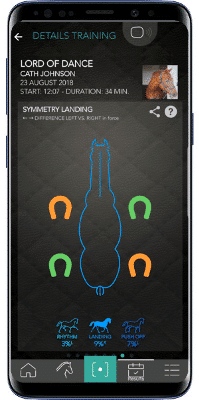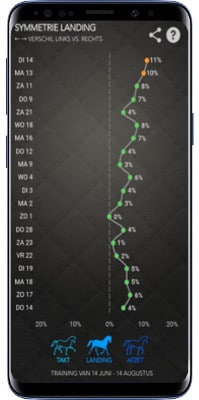**SALE** Equestic - Saddle Clip
Extended Equestic SaddleClip explanation english - YouTube
Technical specifications
- Color: Black / Brushed Metal
- Materials: Plastics / rubber
- Water and shock-resistant
- Connectivity: Bluetooth Smart 4.1 (Low-Energy).
- Mobile App available for iOS 10 (iPhone 5s and upwards), iOS 11 (iPhone 6 and upwards) and Android 4.4 and upwards
- 8+ hours of riding on fully charged battery, 7+ days on standby.
- No limitation on the number of horses per SaddleClip
- Two-year guarantee with normal use
The analyses explained
Time spend on each rein
We track exactly how much time you’ve to spend on the left or right rein. Because we do this in real-time, you can keep track while riding and adjust your training if needed.
Gait analysis
We measure, in real time while riding, how much time you spend walking, trotting and cantering. Now you can make sure you meet your training goals and do what you set out to do.
Number of jumps
During a jumping training, we keep track of the number of jumps you do and visualize how many you did from the left or right rein. Now you can make sure your training is balanced.
Tempo
Each horse has it’s own optimal tempo. We all strive to find that and to get it as constant as possible. Equestic measures and analyzes tempo per gait (in BPM). You’ll get an insight into your horse’s base tempo and tempo variation.
Intensity
The Equestic App gives you a clear overview of your training intensity per training. Decide on the best training regime for optimum performance and maximum horse welfare.
Elevation
As your horse gets more collected, it will produce more upwards force leading to more elevation. Equestic analyses how this evolves over longer periods of time giving you a more precice objective insight.
Symmetry Analysis
The Equestic SaddleClip measures the symmetry of your horse in three different ways:
- Timing difference based on foot-on and foot-off
- Difference in push-off power
- Difference in impact on landing
This gives much more insight into the symmetry and offers even more possibilities to consciously and effectively train your horse.
It will warn you if one diagonal gets weaker, or when your horse starts throwing itself on one side. Both are indicators of potential injuries or strain. The SaddleClip measures the smallest changes, long before we can feel them.
Why is symmetry so important?
Symmetry is a good indicator of the straightness and well-being (physical condition) of the horse and has a great influence on the quality of training. More symmetry means:
- Better rhythm
- Healthier movement
- Better performance in all disciplines
- More print and thus a larger moment of suspension
- The horse is better able to carry the rider and the rider can therefore sit more easily and better
- Less riding problems, the horse can focus better and handle exercises better
- Less stress and less chance of injuries in the horse
If the symmetry starts changing without any apparent reason, that’s usually an indicator something is going on. In the example shown the horse was actually developing a hoof ulcer. The SaddleClip detected that before the rider did. Even with a 10% difference, the horse still looked sound.
How to use symmetry analysis?
Possible causes of deviation in the symmetry can be very diverse. The analysis of the SaddleClip show the facts, but are not a diagnosis of the cause. For that, it is wise to consult with an expert trainer. Possible causes can be:
- Natural skewness horse / crooked horse
- Hidden injuries or strain
- Influence of the rider: Seat, leg, hand
- Influence of tack: bad fitting or crooked saddle, bridle or bit
Which exercises or adjustments can be made to improve the symmetry depends on the possible causes and available solutions. Here too, we advise consultation with an expert traine


